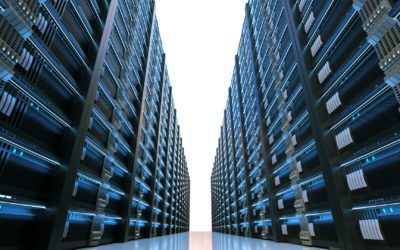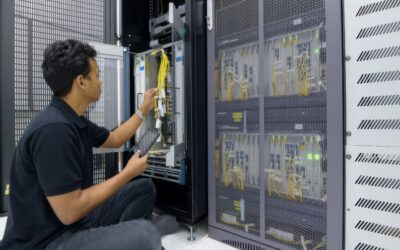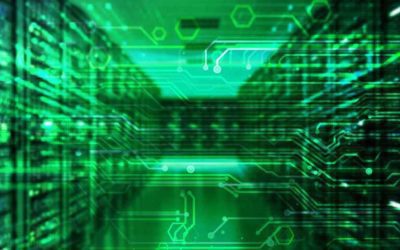While the world is in the grip of the coronavirus, the need for information is increasing. Reliable information, accessible and clearly articulated. Where facts are separated from rumours. For data centers and users, it may now be time to inform the outside world as well as possible about how the use and consumption of electricity is developing. The industry tells what actions the government is taking, but also where the shoe pinches. Just like in the current corona crisis, measuring relevant data is crucial to bring about change. Without relevant data we know nothing, we cannot make adjustments and the industry is not accountable.
Data centers are indispensable in this day and age and they have already made enormous strides with regard to energy efficiency. Now is also the time to involve data center users in the next improvement. After all, almost all data and tools are present, such as the data in the BIOS, ILO and UE. We are all capable of this. The parties must all do it together. The government, data centers, ICT, users, suppliers and software suppliers. In the LEAP pilot of the Amsterdam Economic Board, Green IT Amsterdam, RVO NLdigital and other parties, we at Certios and WcoolIT have taken a first step in conducting research with the government and end users into the use of a new measurement method and the savings potential. by enabling the correct power management settings of servers. In an almost optimal setting, even one of the LEAP participants achieved a 7% energy saving. What can be achieved in a non-optimal setting? 10%? Or maybe 70%, we’ll see. But the main result of the pilot, as far as I’m concerned, is the awareness of the potential for saving electricity and the existing overcapacity of the hardware.
Reliable information
When I talk about reliable information, I also mean that it should be understandable to everyone. The information now available on the left and right does not seem to match. At least I can’t make connections. In fact, they all seem to stand on their own. Many apparently measure with different sizes. I can understand that from different perspectives and interests, some outcomes come out better. However, there should still be some correlation in the data.

In a previous article I have used various ‘quotes’. Many equations are used to illustrate the current and future “consumption” of data centers, but do we understand these equations? I will compare the data (infographic chart 1) of Energie Beheer Nederland (EBN) with the quotes (infographic chart 2) of the Dutch Datacenter Association.

EBN is 100 percent owned by the Dutch state. They implement parts of the climate and energy policy for the Ministry of Economic Affairs and Climate. They are one of the driving forces behind the energy transition in the Netherlands. EBN has in-depth knowledge of the Dutch subsurface and plays a key role in connecting private and public parties in the energy sector. My assumption is that these figures give a true and fair view of the total energy consumption in the Netherlands.
Dutch Data Center Association (DDA) is the trade association for data centers in the Netherlands, the foundation of the digital economy. They now connect 90% of the market-leading data centers in the Netherlands. They articulate industry views on regulatory and policy issues and work in as broad a coalition as possible. DDA has three focus areas: Energy & Sustainability, Education & Employment and Digital Economy & Mainport.
The equations
EBN
- My assumption is that the data centers fall under the Industry category. EBN reports a consumption of 1,115 PJ by the Industry, of which 11% is Electricity, 123.4 PJ or 34.4 TWh.
- The renewable energy used is 41 PJ or 11.4 TWh
- Total final consumption NL is 106 TWh
DDA
- Dutch data centers have a combined capacity of 1,503 MW, the total annual consumption is 1,503 X 8,760 hours = 13.2 TWh
- Green power is 80% of consumed power = 10.5 TWh
- Residual heat: An average household of 3 people consumes 3.5 MWh, or 0.0000035 TWh. If heat accounts for about 70% of the energy consumption of households and according to DDA 1 million households can use residual heat from data centers, then that need is 70% x 1,000,000 x 0,000,003.5 = 2.45 TWh.
(https://www.gaslicht.com/energiebesparing/energieverbruik)
When I compare the information from EBN and DDA, I arrive at the following insights:
- 38.4% of electricity consumed by industry goes through data center (13.2/34.4)
- 12.4% of electricity consumption in NL goes through data centers (13.2/106)
- 92.1% of the renewable energy consumed goes through Data Centers (10.5/11.4)
- 18.5% of the energy consumed by DC can be used for heating households (2.45/13.2)
Those are figures again: Data centers and their users consume 38.4% of the total Industry and thus 12.4% of all electricity in the Netherlands. In addition, 92.1% of all renewable energy is consumed by data centers. This leaves little for the rest of the Netherlands…
These are figures for the whole of the Netherlands. What about the figures for Amsterdam?
Are these figures correct and are you allowed to make these comparisons? I don’t know, it raises a lot of questions for me. We believe we know that ICT and the associated energy consumption will continue to rise. Shouldn’t we then accelerate the generation of more renewable energy and can the electricity network handle it? Shouldn’t we be using the residual heat more quickly? Interesting questions, but what if these figures are not correct? A deviation of 1% is already a lot of electricity.Interesting questions, but what if these figures are not correct?
Energy management
But are we really doing energy management? I don’t think so. We know that server capacity and performance has increased much more than energy consumption, but we also see that energy consumption itself has not decreased. In any case, in the numbers we see that everyone expects IT energy consumption to continue to grow, albeit not in the speed of IT performance growth, but still… How much does it keep increasing? I don’t know. What do you think? In any case, the climate discussion has accelerated things and put energy management (higher) on the agenda.
Energy management is not possible without knowing how much energy data centers use, without knowledge of the size of the underlying energy contracts, how much energy is generated by wind, solar, alternative, etc. Energy efficiency and sustainability are buzzwords and good for the image, but it is time to back it up with figures, with reliable ratios, coordinated and certified by independent institutions.
Transparency helps
How do we achieve this? In any case, by doing it together, together with the government, data centers and interest groups for data centers and ICT.
What is the solution then? I would like to see a covenant between the parties, which stipulates that monthly reports are made to the government. Server owners report the data and provide insight into the energy consumption and behavior of the servers. Relevant data has been present at the heart of IT equipment for many years. BIOS, ILO and other systems keep track of this data. Data centers report their total energy consumption and the energy consumption consumed by the servers on a monthly basis. On the basis of this information, the government can then make regulations, in consultation with the interest group. Data centers and ICT users can use the information for accountability to their stakeholders and to society.
Ultimately, we must be able to test objectives against actual figures and analyze the impact of measures on the basis of reliable figures. Otherwise it will remain a hobby with numbers and beautiful words without tangible results.
In my view, the authorities and companies should move beyond their primary interests and take joint responsibility for shaping the next step in the maturity of this industry.
Transparency helps. The beginning is here…




